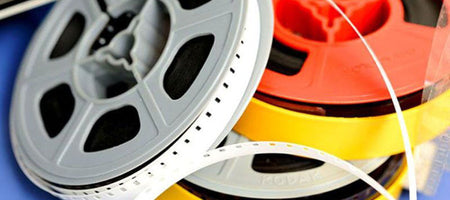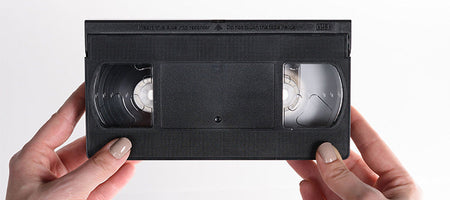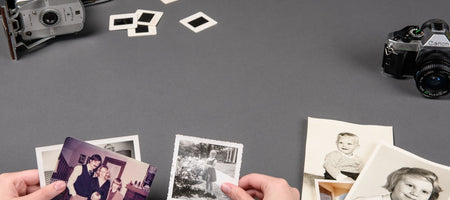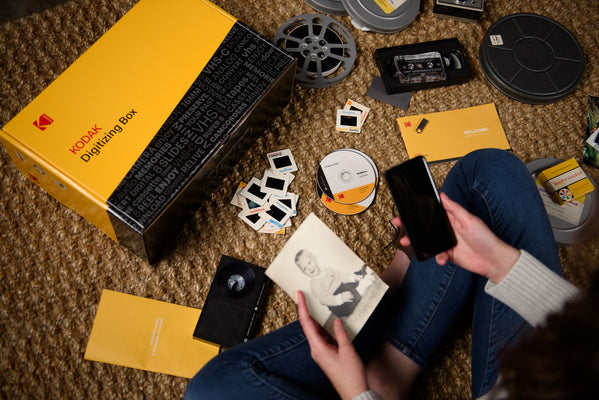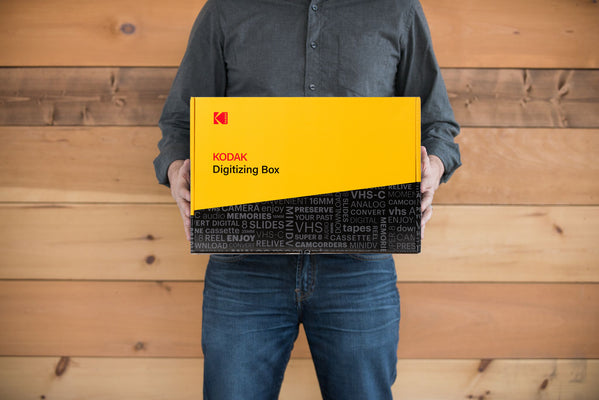If you grew up in the ‘90s or earlier, you’ve probably got a couple of cameos on some home movies. Whether it’s a little league softball game, or your fifth birthday party, or Christmas day in 1993, we’ve all got tapes from the golden days featuring ourselves and our loved ones from a past era.
You may be surprised to hear that you’re not the only one whose family has kept tapes around for so many years. In fact, many Americans still own VCRs and cherish the nostalgia of playing these tapes on the ancient format in 2019. There’s something about popping a VHS tape into the player that is so satisfying and sentimental. It adds to the warm and fuzzy feelings felt while watching home movies and transports us back to the day it was recorded.
The problem is, though, your tapes are in danger.
You may think of your tapes as ancient dinosaurs that have somehow survived over all these years. The sad news is that nothing lasts forever - including your tapes that are holding some of life’s most precious memories. Your tapes are at risk of decay, and in many more ways than one. Let’s dive into the ins and outs of tape decay so that you can be on the lookout for the warning signs and prevent your memories from becoming lost forever to time.
Over-Usage
Your tapes were not made to be played over and over again into infinity. In fact, each tape only has a certain amount of lubricant stored, and once the lubricant runs out, the tape no longer runs smoothly and can be subject to breakage and stripping.
Rewinding and fast-forwarding tapes over the years can eventually cause the tape to detach from its reels, making it impossible to play at all. Also, two parts of a tape, the backing and the substrate, can become stretched from too much rewinding and fast-forwarding, creating tracking issues with the tape that can eventually cause distortions in the image and sound quality.
Over the years, it’s likely that your tapes have been dropped or stepped on over and over again. Each time your tapes become jostled around or are subjected to too much physical pressure, there is a risk that the mechanisms inside the tape can become damaged or broken entirely. If this happens, your tape will become unplayable, and it could potentially damage your VCR if inserted.
These damages accrued through usage over-time are almost unavoidable. It can be difficult to know when your tapes are truly at risk or at the point of no return. Detached tapes can be reattached by a professional, but shredded, stripped, and broken tapes can often not be saved.
Temperature Damage
Mold and humidity go hand in hand, and both pose a serious threat to your tapes. If your tapes are stored in a humid space that is not temperature-controlled, your tapes are likely to develop white or green fuzz in their crevices - this mold can only be cleaned up by professionals and can often be a death sentence for your tapes. Humidity can cause the polymer in tapes to stick together, forming a solid rock out of the reels. This damage is irreversible and can destroy a tape player if one tried to use the tape anyway.
Another enemy to tapes is changing temperatures. Heat waves and cold fronts can warp the magnetic ribbon of the tapes, causing distortions of video quality and sound. If the warping is bad enough, the tape will not play smoothly in a VCR and can be susceptible to tearing and stretching. If your tapes are subjected to a combination of a humid environment along with temperature fluxes, shredding can occur when you try to play your tapes. After a tape is shredded, there is no saving it.
The only way to prevent temperature damage to your tapes is to store them in a dry, temperature-controlled environment. Spaces like basements and attics are no place for your precious memories, and if you leave tapes there for too long you may lose them to the elements. Instead, keep tapes and any analog media format stored in waterproof containers and out of humid environments.
Age Damage
Tapes have magnetic particles inside their binding which store the tape’s audio and image information. Over time, these magnetic particles lose their charge, causing discoloring and fuzziness in image quality. Eventually, the particles may become completely demagnetized, especially if tapes are stored near other magnetic items.
In general, time is not kind to tapes. Over a 25 year period, a tape can experience up to 20% signal loss, even when the tape has been stored in prime conditions and has been played back sparingly.
What Can You Do?
With old tapes, there is nothing you can do to ensure they keep their same quality over the years. Over time, tapes become exposed to all sorts of environmental threats, and it is very common to experience changes in the visual and audio quality of the tapes. The only way to prevent the complete destruction of the integrity of your tapes is to get them digitized. Kodak Digitizing makes the digitization process easier than providing prepaid shipping, hands-on digitization by experts, and the best customer service imaginable. Protect your tapes from age, overuse and temperature damage with Kodak Digitizing.

